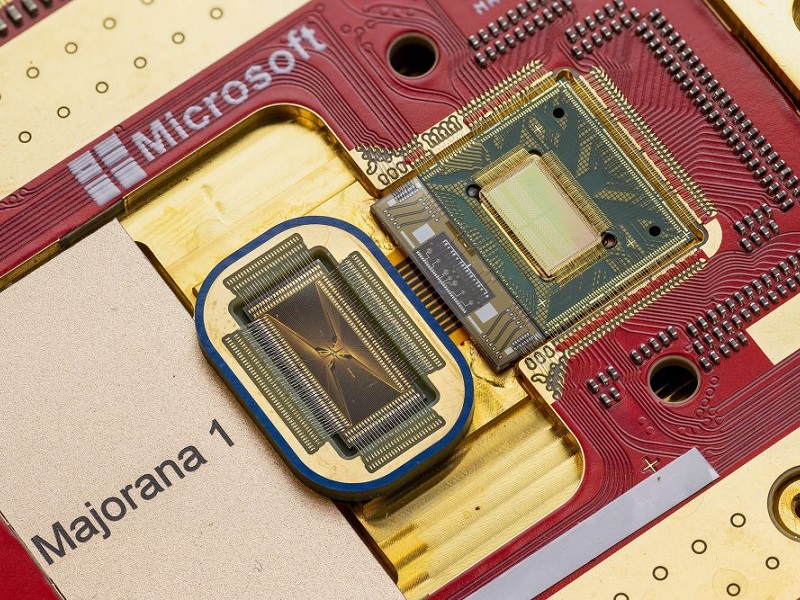Australian research into topoconductors was crucial to the development of a new type of chip that Microsoft says makes useful quantum computers a reality “in years, not decades”.
The palm-sized chip is powered by the world’s first topoconductor, which can create an entirely new state of matter that is not a solid, liquid or gas, the US tech giant announced on Thursday.
The company said the groundbreaking chip, dubbed Majorana 1, makes it possible to squeeze a million qubits onto a single hand-sized chip, opening up new near-term computing possibilities.
It comes amid claims by chipmaker and AI darling Nvidia that practical uses of quantum computing remain two decades away, despite other recent breakthroughs by Big Tech giants and competitors.

Majorana 1 arrives after 17 years of research by the company into topological qubit architecture conducted in the belief that it would offer more stable qubits requiring less error correction.
Topoconductors previously existing only in theory, but new research paper published in scientific journal Nature overnight validates a “necessary ingredient of topological quantum computation”: measurement.
Researchers, including Australian physicist David Reilly, were able to demonstrate that the new type of material can be harnessed to engineer a type of qubit that is small, fast and digitally controlled.
The breakthrough required “developing an entirely new materials stack made of indium arsenide and aluminum” to “coax new quantum particles called Majoranas into existence”, according to Microsoft
“The robustness against errors and simplicity of control offered by this approach make measurement-based topological qubits a promising path towards utility-scale quantum computation…” the paper reads.
Professor Reilly until last year led Microsoft’s local quantum computing research efforts out of the University of Sydney, a seven-year collaboration that ended when Microsoft opted to consolidate its quantum program in the United States.
He told InnovationAus.com that “a lot of work that went into that Nature paper was done here at [the University of] Sydney” and he was delighted to see the research emerge post-peer review.
“The paper in Nature is proving out the readout and control techniques that we’re super proud of and we’re largely developed here,” he said following the announcement.
Professor Reilly said that while the paper is fundamentally a physics result and “about the readout technique and the measurement technique for qubits”, quantum computing is moving in the right direction.
“The activities of the team here, the knowhow and the capabilities that have created for Microsoft, over the years, a very important building block for their future technologies and that’s having impact,” he said.
“We want to do the same thing again and again and again, and that’s why we chose to remain in Australia, remain together as a 20 person team.”
Microsoft said the progress validates its choice to pursue a topological qubit design, and that following the research it has been able to place eight topological qubits on chips designed to scale to one million qubits.
It is one of two companies selected by the US Defense Advanced Research Projects Agency (DARPA) to continue work as part of the Underexplored Systems for Utility-Scale Quantum Computing (US2QC) program.
The other company selected for the program is PsiQuantum, the Californian startup that plans to build the world’s first utility-scale, fault-tolerant quantum computer in Australia using photons.
With James Riley
Do you know more? Contact James Riley via Email.


It is important to note the specific raw materials that are required to build the capabilities that have been recently revealed by Microsoft – specifically – InAs (indiun arsenide).There is of course a high toxicity in these materials and Australia regulation regarding the storage, processing and use of such materials (born from zinc, copper, gold) lacks specific semi-conductor-focused hazardous material regulations compared to the U.S. or E.U. If we are indeed to manufacture quantum chips with InAs our existing handling laws need to be uplift/improved to ensure sufficient safety protocols are in place.